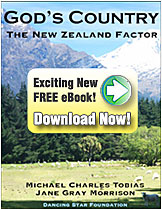Sustainability and Animal Rights
Sustainability and Animal Rights: Hope for the Future
For the Jains, every entity, down to the equivalent of atoms, or nigodas, has a soul that is endowed with a unique life force; dewdrops, sand, spores, the wind herself all carry this force of being which we would ignore at our own fool-heartiness.
The animal rights conscience is the affirmation of a universal commitment to non-violence. It confirms a level of activist conviction that takes seriously the parliament of all beings; a fellowship that excludes no one, encompassing all creatures. In Jean-Paul Sartre’s magnificent tome, Being and Nothingness (L’Être et le néant: Essai d’ontologie phénoménologique, 1943) he concludes his 800-page meditation with a single, ‘oft cited declarative, that “man is a useless passion”. If this is true, then we my as well give up right now. But if it is not true, then we have a mission to accomplish. Prior to Sartre’s astonishing and fatalistic epitaph, he chronicles the ontological formulations of his predecessor, Georg Wilhelm Friedrich Hegel (1770-1831)
 Hegel, who enshrined the ideal of an ethical plane of action; a way by which — in spite of the nihilism encincturing our every motive, intention, action and restraint — we might yet redeem ourselves as individuals and as a species. But it will take stepping beyond the comfort zones of habit and embracing the true meaning of synderesis, moral action according to the Catholic interpretation; “spark of conscience” as referred to by the ancient Greeks. This is the same conscience at work some 60,000 years ago at the Shanidar Cave 3, in the Iraqi Zagros Mountains of Kurdistan, first excavated by a team from Columbia University during the period of 1957-1961. The first Neanderthal adult skeletons ever found had revealed that there had been a variety of ritual burials involving the placement of dried flower tiaras atop the skulls of the deceased there, amid rugged mountaintops. Perhaps a child first buried his or her parents. Whatever the circumstances, there is no question but that Ralph Solecki and his team had come upon the first known evidence that Neanderthal, who would intermarry and bear offspring with cotemporaneous Homo sapiens sapiens, thought deeply about the future with a sense of homage that carried over to their loved ones, a sense of conscience that involved the Earth herself. This is where Sartre departed from his otherwise unrelenting pessimism, borne no doubt in the wake of his having spent nine months in a Nazi prisoner of war camp. Sartre got off easy. Thirteen million others did not, prompting recent philosophers and theologians to not only question the existence of any god that would permit Holocausts, but to also give serious thought to the notion of conservation. Why bother, said Woody Allen, if all the homework in the world will be wiped out in an instant, whether in the form of a colliding asteroid, the implosion of the Earth herself in about four more billion years, or in the wake of what will likely prove to be the worst, most rapid extinction regime to date in this planet’s long history.
Hegel, who enshrined the ideal of an ethical plane of action; a way by which — in spite of the nihilism encincturing our every motive, intention, action and restraint — we might yet redeem ourselves as individuals and as a species. But it will take stepping beyond the comfort zones of habit and embracing the true meaning of synderesis, moral action according to the Catholic interpretation; “spark of conscience” as referred to by the ancient Greeks. This is the same conscience at work some 60,000 years ago at the Shanidar Cave 3, in the Iraqi Zagros Mountains of Kurdistan, first excavated by a team from Columbia University during the period of 1957-1961. The first Neanderthal adult skeletons ever found had revealed that there had been a variety of ritual burials involving the placement of dried flower tiaras atop the skulls of the deceased there, amid rugged mountaintops. Perhaps a child first buried his or her parents. Whatever the circumstances, there is no question but that Ralph Solecki and his team had come upon the first known evidence that Neanderthal, who would intermarry and bear offspring with cotemporaneous Homo sapiens sapiens, thought deeply about the future with a sense of homage that carried over to their loved ones, a sense of conscience that involved the Earth herself. This is where Sartre departed from his otherwise unrelenting pessimism, borne no doubt in the wake of his having spent nine months in a Nazi prisoner of war camp. Sartre got off easy. Thirteen million others did not, prompting recent philosophers and theologians to not only question the existence of any god that would permit Holocausts, but to also give serious thought to the notion of conservation. Why bother, said Woody Allen, if all the homework in the world will be wiped out in an instant, whether in the form of a colliding asteroid, the implosion of the Earth herself in about four more billion years, or in the wake of what will likely prove to be the worst, most rapid extinction regime to date in this planet’s long history.
There is a good answer to Woody Allen’s famed “why bother doing homework” query, namely, because we have hope; we can still learn, make fresh coffee, enlist new ideas, extend the olive branch of tenderness, even during the harshest of times. Love knows no constraints. That is the essence of the animal rights conscience.
Comments Off
